The history of Brazil is full of important women who marked their time. They are Indians, whites, blacks, mulattos full of determination who made the difference in peace and war.
1. Dandara (? - 1694) - Warrior of the Quilombo dos Palmares
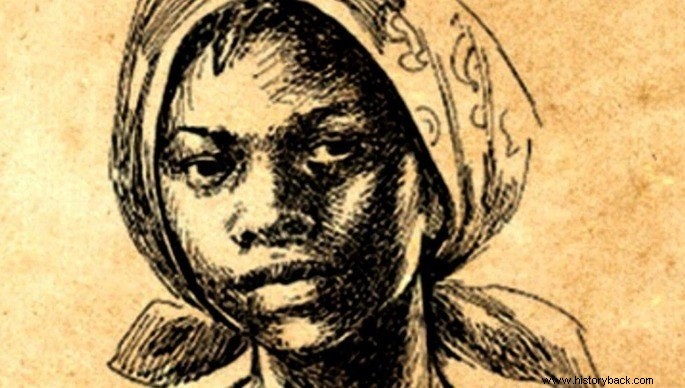
Dandara was a black woman warrior, who excelled in the defense of slaves and in the construction of Quilombo dos Palmares - a place that housed runaway slaves.
Although there are no records, it is believed that Dandara was Brazilian or an African woman who came to Brazil when she was still young. She was the zombie companion of Palmares, with whom she had three children.
Since she did not accept being enslaved again, after being imprisoned, Dandara will have jumped from an abyss in 1694, resulting in her death.
During the attacks on Quilombo, Dandara will have fought using capoeira techniques.
Dandara, who became a female icon in the fight against slavery, is said to have died jumping from an abyss in 1694. She would have been arrested and would not accept being enslaved again.
2. Nísia Floresta (1810 - 1885) - Educator and first feminist in Brazil
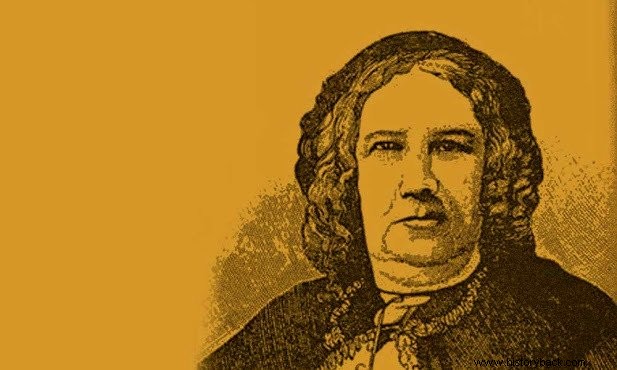
Nísia Floresta Brasileira Augusta was born in Natal, Rio Grande do Norte and wrote her first book, Women's Rights and Men's Injustice, at just 22 years old.
Years later, Nísia Floresta opened a school for girls, where teaching was not limited to sewing and housework, but she also taught grammar, mathematics, science, music, among others.
Nísia was heavily criticized for this. Today, she is known as the first Brazilian feminist and, in her honor, the city in which she was born – formerly Papari – was renamed Nísia Floresta.
3. Anita Garibaldi (1821 - 1849) - Military leader
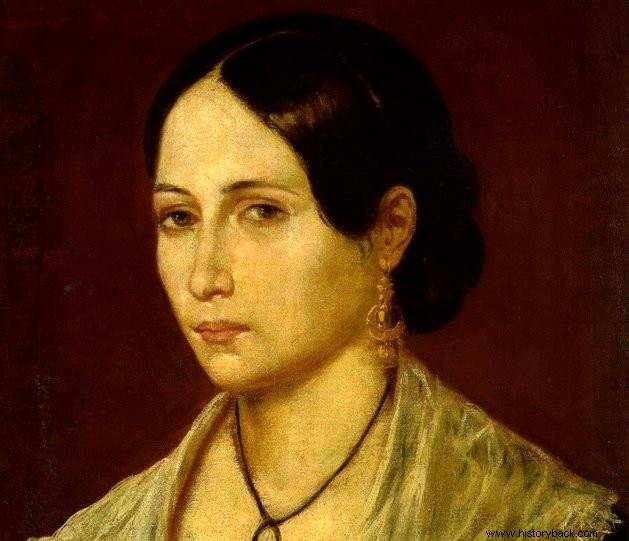
Anita Ribeiro de Jesus, known as Anita Garibaldi, was born in Morrinhos, current Laguna (SC). She got married at 14, but left her husband. In 1839 she met Giuseppe Garibaldi, an Italian fleeing a death sentence in Italy.
A merchant seaman, Garibaldi's knowledge was fundamental for the gaucho and Santa Catarina rebels who were at war against the imperial government. This episode went down in history as the Farroupilha Revolution or the Farrapos War.
Anita Garibaldi joined Giuseppe, with him she fought for the establishment of the republic of Rio Grande and they had their first child. Later, they would go to Uruguay where they would fight the Argentine dictator Juan Manuel Rosas. In Montevideo, they would marry and three more children would be born to the couple.
In 1847, Anita Garibaldi goes to Italy to find out if her husband could return to the country, and with that, they get together, in 1848.
The couple would fight for Italian unification, trying to expel the Austrians from the Lombardy region. During the campaign, however, Anita falls ill and dies.
For her participation in wars on both continents, Anita Garibaldi is called the “Heroine of both Worlds”
See also:Anita Garibaldi4. Chiquinha Gonzaga (1847 - 1935) - Composer, pianist and conductor
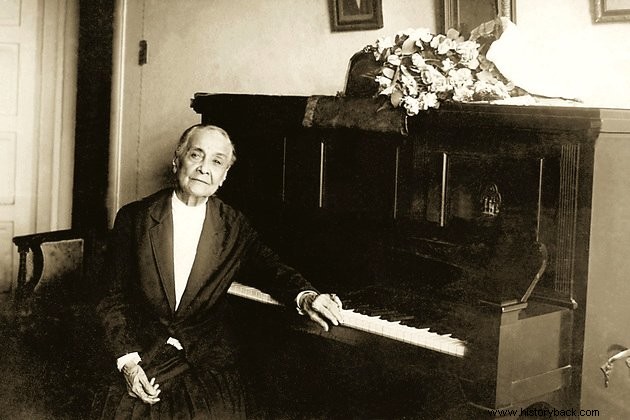
Francisca Edwiges Neves Gonzaga, known as Chiquinha Gonzaga, was born in Rio de Janeiro and was the granddaughter of slaves. Her father married her when she was 16, but she revolted against her husband's mistreatment and abandoned him.
A self-taught pianist, she began to compose works and drew the attention of the producers of the time. In 1884, she premiered the operetta "A Corte na Roça", under her regency and this made her the first Brazilian conductor.
In the same way, she engages in the fight against slavery, copyright and women's rights. She refuses to publish her scores under a male pseudonym and scandalized society with her shocking love life by the standards of the time.
Chiquinha Gonzaga knew how to give a Brazilian touch to the European rhythms that were heard and danced like the waltz, the polka and the mazurka.
It will be the precursor of the carnival marches with the themes "Lua Branca" and "Ó, Abre-Alas" until today mandatory presence in the carnival repertoire.
She left more than two thousand compositions and among which "O Corta-Jaca", "Atraente" stand out, in addition to those already mentioned.
The day of her birth, October 17, was declared National Day of Brazilian Popular Music in 2012.
See also:Chiquinha Gonzaga5. Maria Quitéria (1792 - 1853) - Military
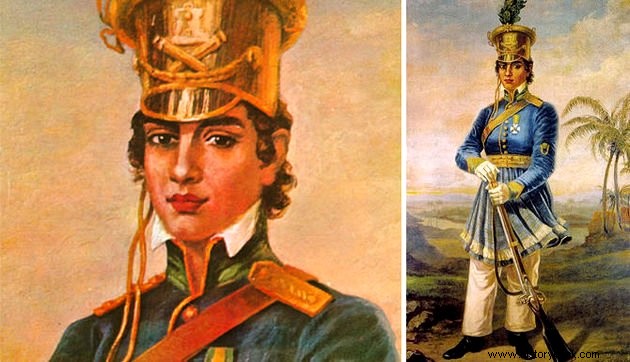
Maria Quitéria was born on a farm near Feira de Santana (BA) and lost her mother at age 10. When Brazil's independence process began, all men of fighting age were summoned.
Having only daughters, Maria Quitéria's father didn't like it when his daughter asked him to authorize her to join the Prince Regent's regiment.
Faced with her father's prohibition, she runs away from home and goes to her half-sister's residence, who helps her transform into soldier Medeiros.
She excels at weaponry and becomes respected, but her father ends up discovering her disguise. Faced with the intervention of the Major of the Prince's Volunteer Battalion, he grants his permission for her to remain there.
With this, she becomes the first woman to join the regular forces in Brazil. Maria Quitéria participates in several battles against Portuguese troops who did not accept the independence of Brazil.
Maria Quitéria was awarded the Imperial Order of the Cruzeiro by Emperor Dom Pedro I. She marries an old boyfriend and has a daughter. She died in Salvador and is buried in this city.
See also:Maria Quiteria6. Chica da Silva (1732 - 1796) - Freed slave
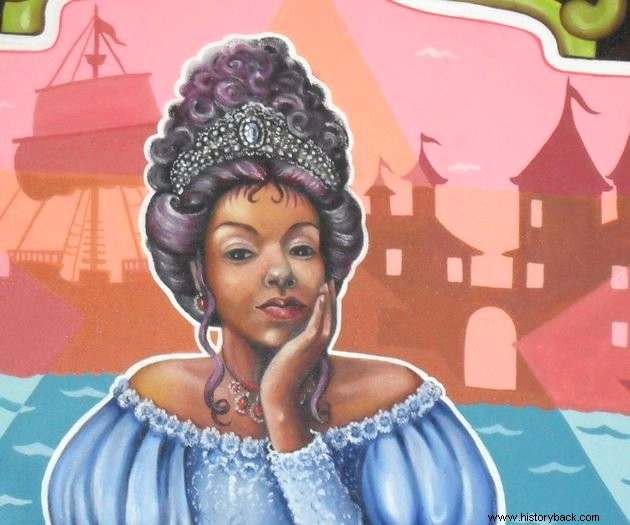
Francisca, was born in 1732, in Arraial do Tijuco, today Diamantina (MG). Born of a slave mother and a Portuguese soldier, who abandoned them and did not grant them manumission. Subsequently, she was a slave of a doctor and with him had a child.
However, the contractor João Fernandes (responsible for buying and selling the diamonds), buys Chica da Silva and the two fall in love. To society's scandal, they live together and he frees her. Both would have 13 children who were recognized by their father, something rare at the time.
Chica da Silva became a powerful and wealthy lady, but she was not fully accepted by society and could never enter certain churches and houses.
Equally, she had slaves and dressed elegantly, wearing jewelry and wigs, to flaunt her wealth.
João Fernandes returned to Portugal in 1770, taking his sons with him while the women were left in the care of their mother. She would die nine years later without ever having seen her mate again.
For her part, Chica da Silva managed João Fernandes' assets and thus, ensured good marriages for some of her daughters.
See also:Chica da Silva7. Catarina Paraguaçu (1503 - 1583) - Tupinambá India
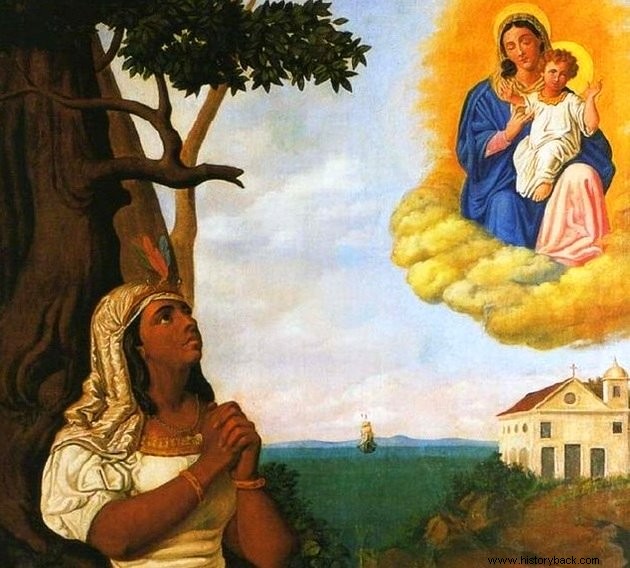
Paraguaçu was an Indian of the Tupinambá tribe, daughter of the chief Taparica who gave the island its name from Itaparica. Her life changed after she met Portuguese Diogo Álvares Correia, known as Caramuru.
Many consider her the mother of Brazil, because she together with Caramuru she started to build the city of Salvador.
In 1528, the couple left for France, where she was baptized in the church of Saint-Malo. Converted to Catholicism, the couple also married in this French city and had four daughters.
Catarina Paraguaçu died in 1583 and bequeathed all her goods to the Benedictines. Paraguaçu's remains are in the Church and Abbey of Nossa Senhora da Graça, in Salvador.
8. Ana Pimentel (1500? -?) - Attorney and administrator
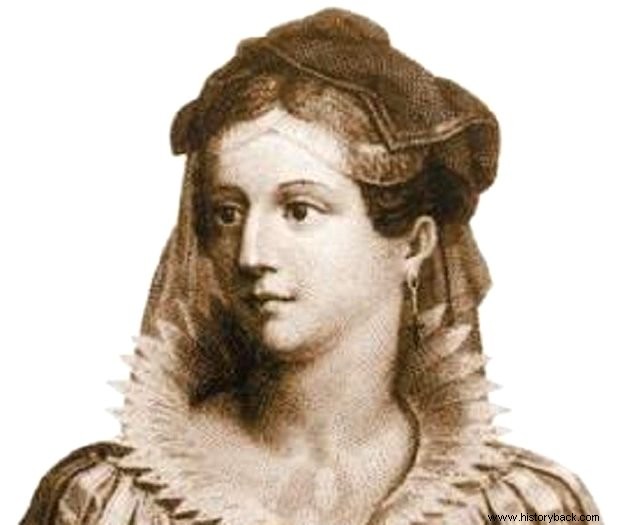
Ana Pimentel Henriques Maldonado, wife of Martim Afonso de Sousa, was a Spanish noblewoman. She met her husband when he accompanied the dowager queen Dona Leonor of Austria (1498-1558) to the Kingdom of Castile.
Martim Afonso went to Brazil in 1530, to take possession of the Captaincy of São Vicente, returning to Lisbon in 1534.
He left again on a mission, this time to India. While there, Ana Pimentel stayed in Lisbon and became her husband's attorney in relation to Brazilian affairs.
Thus, it was she who decided to introduce the planting of sugar cane in Cubatão and cattle in the Captaincy of São Vicente (São Paulo). She also revoked her husband's order forbidding settlers from entering the Piratininga camp. With this, the colony was internalized.
She would have six children with Martim Afonso de Souza and was completely forgotten in the history of Brazil.
9. Maria Tomásia Figueira Lima (1826 - 1902) - Abolitionist
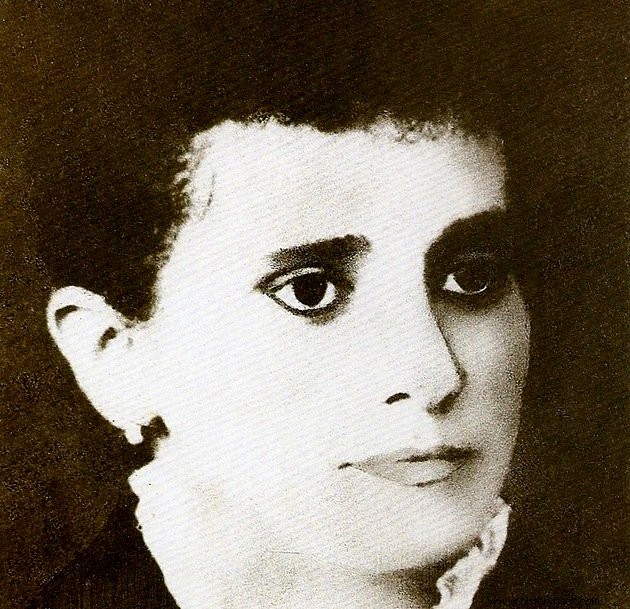
Maria Tomásia Figueira Lima came from a wealthy family, born in the city of Sobral (CE).
Married in second marriage to the abolitionist Francisco de Paula de Oliveira Lima, she founded, in 1882, the Sociedade Abolicionista das Senhoras Libertadoras, a section of the Sociedade Libertadora Cearense.
The institution's objective was to free slaves, pressure the government to abolish slavery and make the greatest number of people aware of this fact.
On the day of her inauguration as president of the society, 83 letters of manumission were delivered to slaves
She had the help of Maria Correia do Amaral and Elvira Pinho, and José do Patrocínio himself praised the work of those Ceará ladies.
In 1884, after debates, strikes and social pressure, the provincial Legislative Assembly decreed the end of slavery in Ceará, the first to do so in the country.
She died in 1902 (or 1903) in Recife.
10. Princess Isabel (1846-1921) - Imperial Princess of Brazil
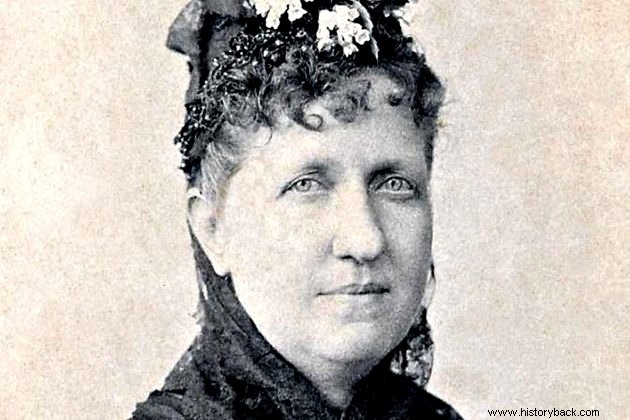
Princess Dona Isabel of Brazil was the second daughter of Emperor Dom Pedro II and Empress Dona Tereza Cristina. After the death of her brothers she was declared heir to the Brazilian throne and at the age of 14 she swears to the Imperial Constitution.
She married in 1864 the French prince Gaston of Orléans, Count d'Eu and with him would have three children.
In order to prepare her for her future duties, Dom Pedro II left her as regent three times. On that occasion, he would sign laws that aimed to favor the abolition of slavery in Brazil.
In 1888, after intense political struggle, the princess signs the Lei Áurea that would end slave labor in the country.
However, the agrarian elite and the Brazilian Army would not forgive the gesture. On November 15, 1889, a coup d'état proclaimed the Republic and the Brazilian imperial family was expelled from Brazil and exiled to France.
Princess Isabel would never return to Brazil alive, having died in France.
See also:Princess Isabel11. Maria da Penha (1945) - Biochemical Pharmacist
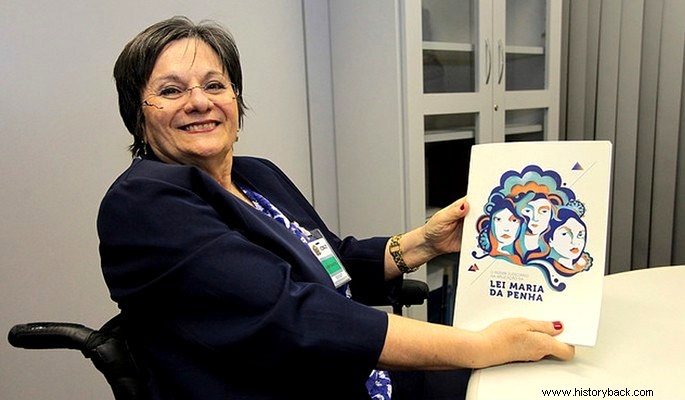
Maria da Penha is a biochemical pharmacist who was born in Ceará. It names the Brazilian law for the protection of women against domestic and family violence, Law No. 11,340, of August 7, 2006.
In addition, she is the founder of the Maria da Penha Institute, which aims to contribute to monitoring compliance with the law.
Maria da Penha was a victim of domestic violence by her husband at the time, who shot her in the back while she slept, leaving Maria da Penha paraplegic. The crime happened in 1983. Months later, the man tries to electrocute her.
But the fight for justice was long. It was only in 2006 that the Maria da Penha Law was enacted, thanks to the intervention of the Inter-American Commission on Human Rights of the Organization of American States (IACHR/OAS)
12. Tarsila do Amaral (1886 - 1973) - Painter and draughtsman
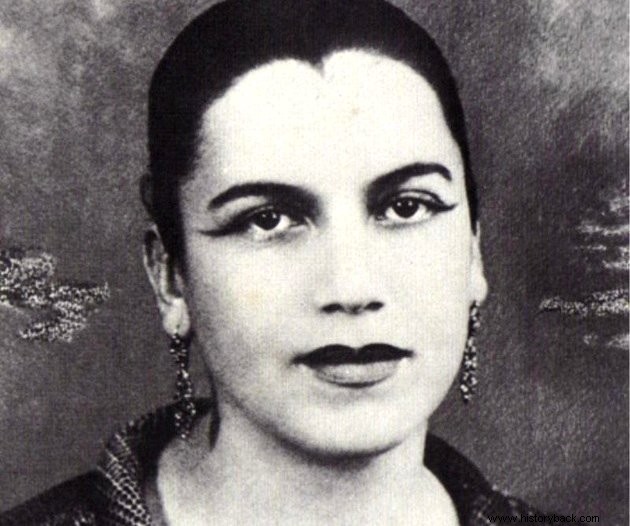
Tarsila do Amaral was born in the city of Capivari, in São Paulo. From a wealthy family, owner of coffee farms, she studied in Barcelona as a teenager.
In 1920, she goes to Paris where she attended the Julien Academy. Friend of the painter Anitta Malfatti, the two corresponded and discussed the new directions that art was taking in Brazil and in the world.
Upon returning to Brazil, Anita Malfatti introduces her to the group that brought together the great names of Brazilian modernism:Oswald de Andrade, Mario de Andrade and Menotti del Picchia.
She is in love with Oswald de Andrade and dedicates to him, in 1928, her best-known canvas and most expensive work by a Brazilian artist:Abaporu. She has her first solo exhibition in Rio in 1929.
She was honored with retrospectives in the 1960s at the Museum of Modern Art in São Paulo and at the Venice Biennale.
Tarsila's painting absorbs European modernist trends such as Cubism. Her works depict the changes brought with industrialization to Brazil, Brazilian legends and festivals such as carnival.
13. Narcisa Amália de Campos (1856 - 1924) - Journalist and poet
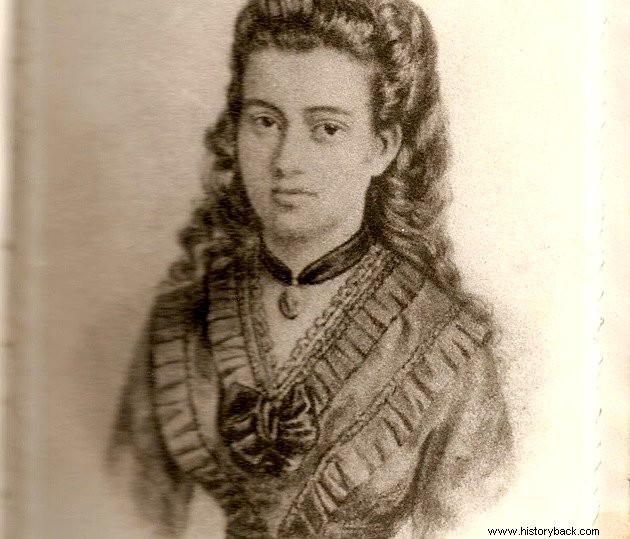
Narcisa Amália de Campos was born in São João da Barra and is considered the first professional journalist in Brazil. She founded a newspaper aimed at the female audience, "Gazetinha" , where he dealt with women's issues, but also on the abolition of slavery and nationalism.
She published a book of poetry entitled "Nebulosas" in 1872, which receives praise from Machado de Assis and in the Rio de Janeiro newspaper "A Reforma", the writer João Peçanha Póvoa called her the "Princess of Letters"
However, Narcisa had to face the accusations that she was not the author of those poems and put up with the rumors that her ex-husband spread about her in Resende (RJ). She left this town and contracts a new marriage which also ends in divorce.
Despite being recognized during her lifetime, Narcisa Amália's poetic career was short because she had no interest in editing authors in that century. She died in Rio de Janeiro in 1924, completely forgotten.
14. Bertha Lutz (1894 - 1976) - Botany, lawyer and feminist activist
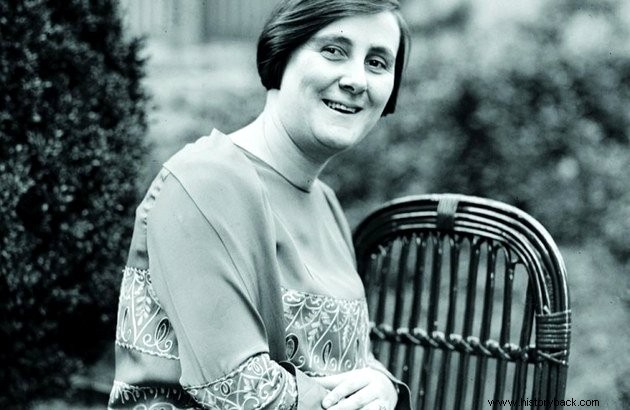
Bertha Lutz was born in Rio de Janeiro and received a thorough education. She studied at the Sorbonne, at the Faculty of Science and there in Paris came into contact with feminist ideas.
She returns to Brazil in 1918 and works as a translator at the Instituto Oswaldo Cruz with her father, the zoologist Adolfo Lutz.
She becomes the second woman to take part in a public contest in Brazil, but her application would only be accepted after a legal battle. She is approved and joins as secretary of the National Museum, of which, years later, she would be director.
Bertha Lutz also did a remarkable job as an educator. She founds the League for the Intellectual Emancipation of Women and participates in the Brazilian Education Association that defended public, secular and mixed education, and secondary education for all.
Alongside several women, she manages to get the Colégio Pedro II, in Rio de Janeiro, to accept the admission of girls.
In 1928, she enters the Faculty of Law, University of Brazil to understand the place of women in Brazilian legislation.
During the struggle to win the female vote, she participates in the campaign for mayor of Alzira Soriano Teixeira, in Lages (RN).
In 1935, she is elected deputy deputy, a position she assumes in 1936 and ends with the 1937 coup d'état. In this way, she returns to dedicating herself to science, organizing her father's collection at the Oswaldo Cruz Institute.
Bertha Lutz names several schools and streets across the country. In 2001, the Diploma Mulher Cidadã Bertha Lutz was instituted by the Brazilian Senate. This award aims to annually honor five women who have distinguished themselves in the struggle for women's rights in Brazil.
15. Carlota Pereira de Queirós (1892 - 1982) - Physician and deputy
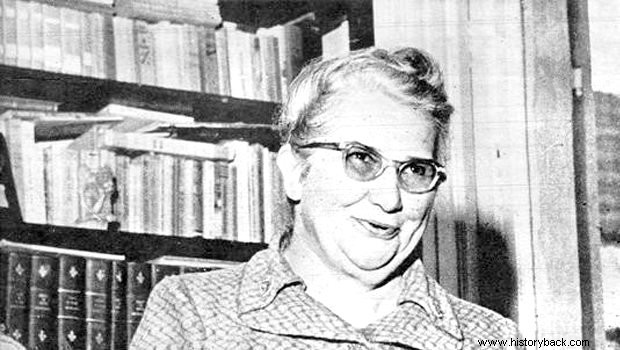
Carlota Pereira de Queirós was born in São Paulo into a traditional São Paulo family. She was a professor, but disillusioned with the profession, she decided to be a doctor and graduated in Medicine at USP in 1926. In this field, she would excel as a hematologist.
During the Constitutionalist Revolution of 1932 she provided assistance to the wounded by organizing a group of 700 women.
The taste for the democratic struggle made her run for the Chapa Única for São Paulo in the 1933 legislative elections. Her candidacy was supported by about 14 women's associations in São Paulo.
Victorious, she would be Brazil's first federal deputy. She would integrate the health and education committees and was the author of the amendment that created the Casa do Jornaleiro and the Child Biology laboratory.
She participated in the Constituent Assembly that would draft the new Magna Carta, but the 1937 coup ended her political trajectory. During the Estado Novo she would fight for the redemocratization of Brazil.
Although she was a pioneer in politics, Carlota de Queirós' ideas were conservative and distanced from intellectuals such as Bertha Lutz. In the 60s, she supported the coup of 64 that overthrew President João Goulart.
Either way, she went down in history by breaking the male hegemony of the Brazilian legislature by being honored with an avenue and a bust in São Paulo.
16. Carmen Miranda (1909 - 1955) - Singer and actress
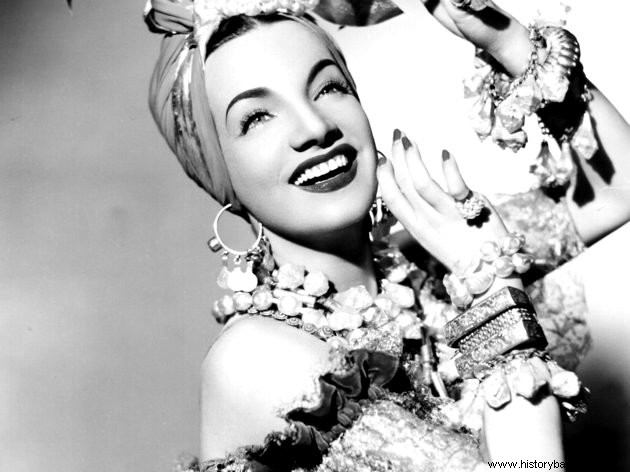
Carmen Miranda was born in Portugal, but her family moved to Rio de Janeiro when she was still a baby. She was raised in the neighborhood of Lapa, where she lived with the best of carioca samba that was consolidated.
With her sister Aurora, she formed a duo that played marchinhas and sambas on the radio. Carmen Miranda quickly became a popular singer and composers began to dedicate several themes to her. Her first album sold 35,000 copies, a record for the time and enshrined the composition "Taí?", by Joubert de Carvalho.
His captivating smile, the theatrical interpretation he gave to the lyrics of the songs and his quick diction inaugurated a new era for Brazilian music. In addition, she took great care of her clothes and accessories that would turn her into a fashion icon.
With the approach of the United States and Brazil, due to the Good Neighbor policy, Carmen Miranda goes to Hollywood, in 1939, to record films and perform shows.
Success “What does Bahia have? ” by Dorival Caymmi and becomes the highest paid artist in the United States in the 1940s. From then on, the character of the “baiana” with her exotic costume would definitely mark her.
Therefore, her critics did not forgive her transformation into a caricature, where in Brazil she was a woman dressed in a profusion of tropical fruits and musicians dressed in Mexican fashion.
In any case, the public has not forgotten her. In 1955, when she passed away, her burial in Rio de Janeiro was a real popular commotion that paralyzed the city.
Her influence continued in cultural movements such as Tropicalismo and to this day Carmen Miranda is a reference of Brazil abroad.
17. Enedina Alves Marques (1913 - 1981) - Civil Engineer
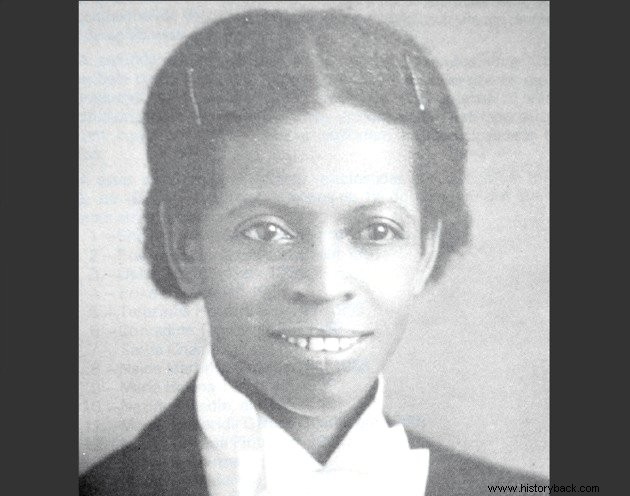
If it is still strange for a woman to pursue a career in engineering, imagine in the 1940s. Enedina Alves Marques, born in Curitiba, was a mathematics teacher. She entered the Federal University of Paraná in 1940 and had to reconcile work and study.
She was the first black woman in Brazil to graduate as an engineer and the first to complete the course at a university in Paraná.
Her efforts were rewarded, because when she finished the course, she worked at the Paraná State Department of Water and Electricity. Likewise, she was part of the team of engineers that worked on the construction of the Capivari-Cachoeira hydroelectric plant (PR).
She was also responsible for the construction of the Paraná University Student House and the Paraná State College, both in Curitiba.
Currently, the name of Enedina Alves Marques baptizes the Institute of Black Women, in Maringá (PR).
18. Zilda Arns (1934 - 2010) - Founder of the Pastoral da Criança
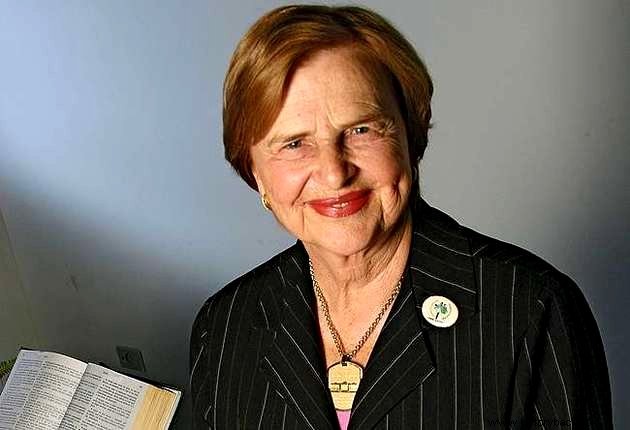
Born in Santa Catarina, Zilda Arns graduated in Medicine, specialized in Pediatrics and was also a health worker. She was the sister of the Archbishop of São Paulo, Dom Paulo Evaristo Arns, who stood out for his opposition to the military dictatorship.
She was the mother of five children and became a widow in 1978. In this way, she was able to dedicate her life to the needy through the foundation of the Pastoral da Criança and the Pastoral da Pessoa Idosa.
This institution, linked to the Catholic Church, aimed to combat child malnutrition, social inequality and violence.
The Pastoral da Criança guides mothers to breastfeed, to make the homemade serum and the multi-mixture. In addition, it teaches the notions of hygiene and health.
The pastoral works in 43,000 municipalities in Brazil and it is estimated that more than two million children have benefited from its work.
Zilda Arns died during the earthquake that devastated Haiti in 2010.
19. Maria Esther Bueno (1939-2018) - Tennis player

Maria Esther Bueno was born in São Paulo and started playing tennis at a very young age at Clube Tietê. She drew attention for her elegant style and went on to win victories on the tennis world circuit like Wimbledon and the US Open.
She holds 71 world singles titles and was No. 1 in the world in 1959, 1964 and 1966. Likewise, she is the only Brazilian tennis player to have her name in the International Tennis Hall of Fame, an honor she received in 1978.
She also excelled in the doubles tournament and won an individual gold medal and two double silver medals at the Pan American Games in São Paulo in 1963.
Esther Bueno left the courts in the 70s and became a sports commentator on pay TV. The most recent acknowledgment to her career was to name the center court of the Olympic Tennis Center in Rio de Janeiro.
20. Cristina Ortiz (1950) - Pianist

Born in Bahia, Cristina Ortiz was a child prodigy on the piano. She entered the Brazilian Conservatory of Music in Rio de Janeiro and at age 11 she performed under the baton of conductor Eleazar de Carvalho.
She got a scholarship to study in Paris at age 15, where she was a student of the celebrated Brazilian pianist Magda Tagliaferro (1893-1986).
After her stay in the French capital she went to the United States to study with Rudolf Serkin (1903-1991). There she would be the first woman and the first Brazilian to win the Van Cliburn Contest, in 1969, which is held every three years. Only 30 years later would another woman win this award.
In the 80's she was the only woman featured in the series "Os Pianistas" promoted by the Brazilian Symphony Orchestra (OSB) in Rio de Janeiro.
She recorded more than 30 albums as a soloist or accompanied by orchestras. She has already given master class at the Julliard School of Music in New York and at the Royal Academy of Music in London. Currently, in addition to being a concert performer, every summer she brings together young pianists at her home in the south of France to share their musical experience.
21. Ana Cristina Cesar (1952 - 1983) - Poet and translator

Ana Cristina Cesar was born in Rio de Janeiro and was one of the most important poets of the 70s. Raised in an intellectual environment, her father founded the publishing house Paz e Terra and her mother, a teacher. At the age of six she dictated her first poem and at ten she organized her poetic memory.
She did an exchange in England that would mark her encounter with English-language poetry. She would study letters at PUC / RJ, at a time when this university was politically seething with the end of the military dictatorship.
Ana Cristina's poetry is part of the movement of marginal poetry and the Mimeógrafo Generation. More than the muse of this group, the poet was a great creator. Ana Cristina's verses reflect her intimacy and manage to contact the reader
Intense and eager to write more, Ana Cristina released “A Teus Pés” and “Gluvas de Pelica” during her lifetime. She committed suicide at age 31, which only adds to the mystery about the writer's life.
The author was the second writer to be honored at the International Literary Fair of Paraty.
22. Raimunda Putani Yawnawá (1980) - Pajé Yawnawá
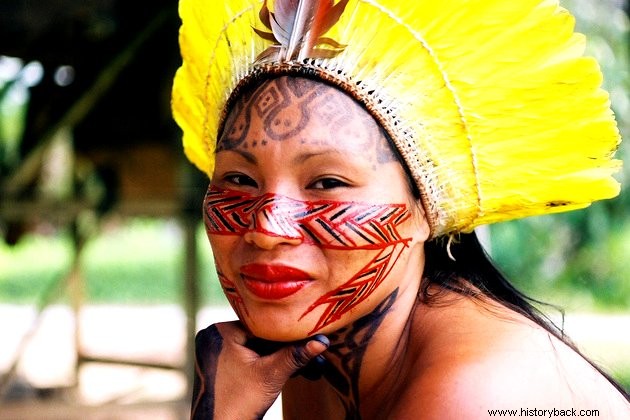
Raimunda Putani Yawnawá is an Indian who belongs to the Yawnawá people and was born in the Indigenous Land of Rio Gregório, in Acre.
Along with her sister, Kátia, she was educated in indigenous and white culture. Both speak Portuguese with ease.
They were the first women of their tribe to volunteer for the hard training of becoming shamans. They had to be isolated for a year, eating raw food and not drinking water, just a corn-based liquid.
In this way, they were able to swear an oath to the Rarê Muká plant, considered sacred in this culture because it opens the mind to knowledge and healing. The indigenous women have become a kind of ambassadors of the Yawnawá culture.
Raimunda Putani received recognition from the Brazilian Senate when she was awarded the Bertha Lutz Woman Citizen Diploma.
23. Daiane dos Santos (1983) - Gymnast
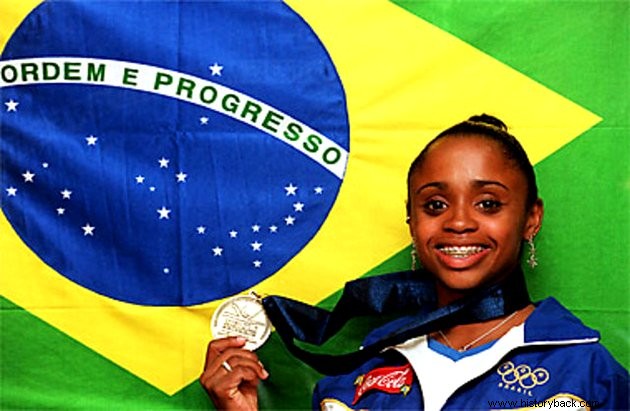
Artistic gymnastics in Brazil is divided before and after Daiane dos Santos. The gaucho gymnast was discovered as a child when she was playing in a city square. She started to dedicate herself hard and was the first Brazilian athlete to win gold at the Anaheim World Championships (United States) in 2003.
At that time, it was not conceivable for Brazilians to participate in artistic gymnastics. However, with the new generation of athletes, for the first time, Brazil managed to qualify for teams in the Athens Olympics (2004).
At the Beijing Olympics (2008), the expectations surrounding Daiane Santos' performance were immense. Brazil, for the first time, went to the final by teams and Daiane reached the final on individual soil. Unfortunately, the athlete made a mistake and ended up in sixth place.
Daiane Santos achieved her best results in the solo competition and there she developed choreographies to the sound of Brazilian music.
Two gymnastics movements are named after her and she paved the way for Brazilian men and women to dream of artistic gymnastics.
Currently, the gymnast is a businesswoman and participates in several projects that promote the sport.
You may also be interested in :
- Inspiring black women
- Black Brazilian Personalities
- Extraordinary women who made history
- Maria da Penha Law:history, characteristics and summary
